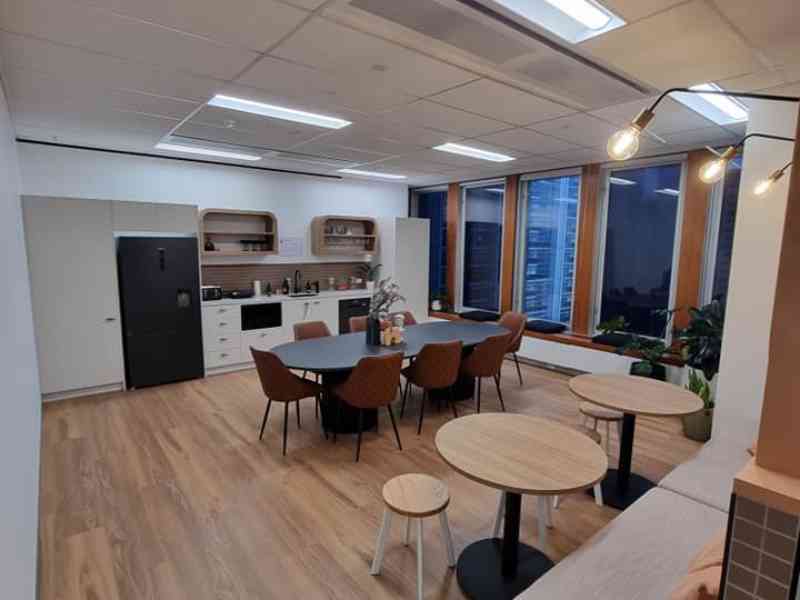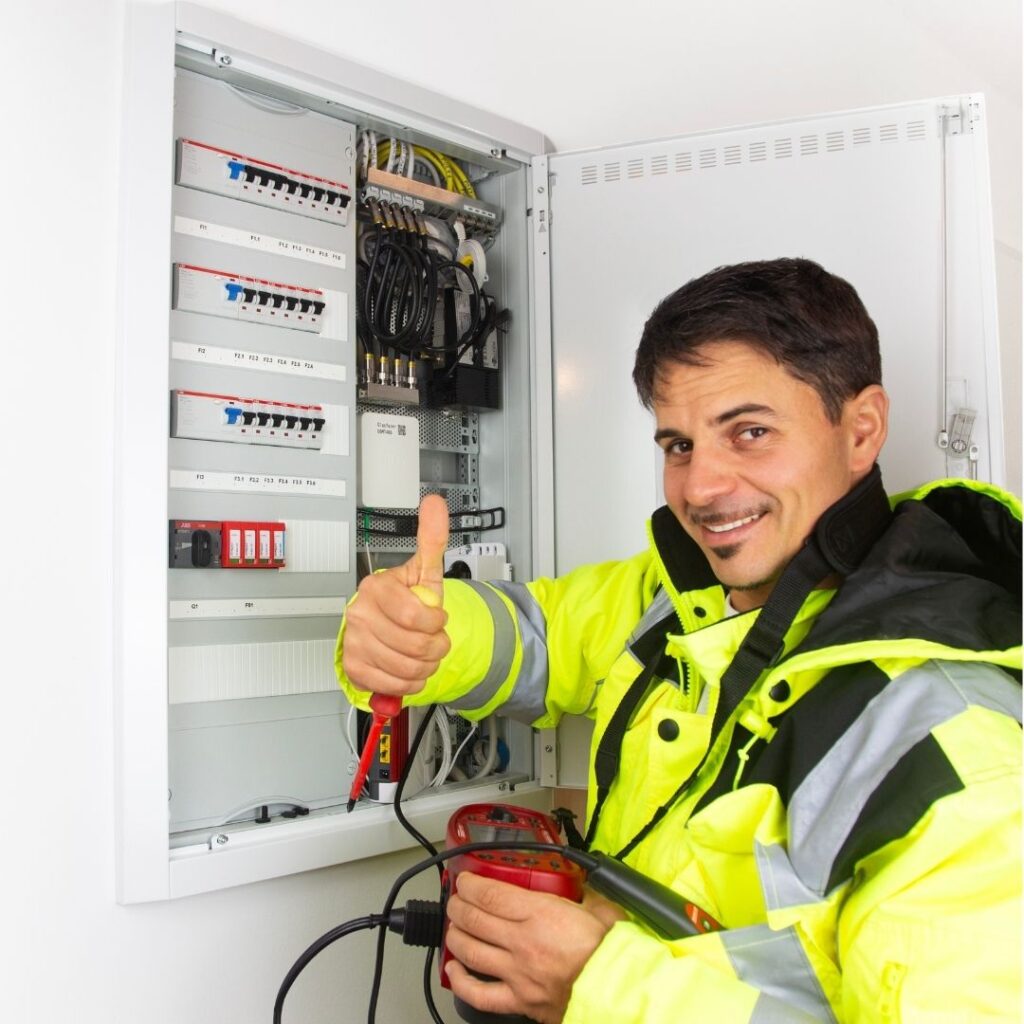Proper wiring in electrical systems forms the foundation of every safe and functional building. Whether for residential, commercial, or industrial applications, circuit system new circuits or upgrading existing ones requires precision, expertise, and strict adherence to electrical codes. This comprehensive guide explores the critical aspects of professional circuit system practices, from planning and materials to installation techniques and safety considerations.
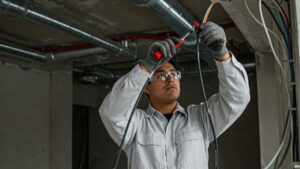
Understanding Wiring In Fundamentals
The process of circuit system electrical systems involves much more than simply connecting wires. Professional wiring in begins with careful planning that considers current needs and future expansion. Electricians must calculate load requirements, determine appropriate wire gauges, and design circuit layouts that optimize performance and safety. This planning stage is particularly crucial when Electrician Working on complex commercial projects with extensive power demands.
Wiring in new installations requires selecting the right type of cable for each application. Common choices include non-metallic (NM) cable for residential dry locations, armored cable for added protection, and conduit systems for commercial and industrial environments. The materials used in circuit system projects must meet Australian standards and be suitable for their intended environment, whether it’s a standard office or a harsh industrial setting.
Residential Wiring In Practices
When circuit system homes, electricians follow specific protocols to ensure safety and functionality. The process typically begins with installing the main service panel and running feeder cables to various circuits throughout the house. Proper circuit system of residential properties requires careful placement of outlets, switches, and lighting fixtures to meet both code requirements and homeowner needs.
Modern residential wiring in increasingly incorporates smart home technologies that demand additional planning. Electricians must consider data and control wiring alongside traditional power circuits when circuit system these advanced systems. This integration often requires coordination between power and Commercial Data Cabling specialists to ensure optimal performance.
Safety devices form a critical component of residential wiring in. Circuit breakers, ground fault circuit interrupters (GFCIs), and arc fault circuit interrupters (AFCIs) must be properly installed and tested during the circuit system process to provide essential protection against electrical hazards.
Commercial Wiring In Requirements
Wiring in commercial environments presents unique challenges compared to residential work. Office Electrician Sydney professionals typically work with three-phase power systems, larger gauge wiring, and more complex distribution networks when circuit system office buildings. These installations must support higher electrical loads while maintaining flexibility for future reconfigurations.
The wiring in of commercial spaces often involves extensive use of conduit systems to protect cables and allow for easier modifications. Electricians must carefully plan conduit routes to avoid interference with structural elements while maintaining accessibility for maintenance. Proper circuit system of commercial properties also requires coordination with other building systems, including HVAC, plumbing, and data networks.
Energy efficiency considerations play a significant role in modern commercial circuit system projects. From lighting control systems to Power Factor Correction Device installations, electricians must incorporate technologies that reduce power consumption while maintaining performance.
Industrial Wiring In Standards
Industrial circuit system demands the highest level of durability and protection for electrical systems. When wiring in factories and manufacturing plants, electricians typically use rigid metal conduits and specially designed cables that can withstand harsh conditions. These Industrial Electrician Services require knowledge of heavy machinery power requirements and specialized control systems.
The wiring in of industrial facilities must account for extreme temperatures, moisture, chemicals, and vibration that could damage standard electrical components. Electricians use specialized wiring methods and materials designed to maintain reliability in these challenging environments. Proper grounding and bonding are particularly critical when circuit system industrial settings to prevent equipment damage and ensure worker safety.
Motor control circuits represent a significant portion of industrial wiring in projects. These systems require careful planning to ensure proper starting, stopping, and protection of large motors that drive production equipment. The circuit system of control panels must follow strict standards to prevent malfunctions that could lead to costly downtime.
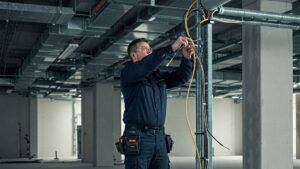
Safety Protocols for Circuit System
Safety remains the top priority in all professional circuit system projects. Before beginning any wiring in work, electricians must verify that circuits are de-energized using appropriate testing equipment. Lockout/tagout procedures ensure systems remain safe during installation or maintenance when circuit system existing buildings.
Personal protective equipment (PPE) is essential when wiring in electrical systems. Insulated gloves, safety glasses, and flame-resistant clothing help protect against shocks and arc flashes. For Commercial Electrician Services working on live systems, additional precautions and specialized PPE are required to meet workplace safety regulations.
Proper tool use is another critical safety aspect of circuit system work. Insulated tools prevent accidental contact with live components, while properly maintained equipment reduces the risk of injuries. Electricians must also follow safe work practices when working at heights or in confined spaces during wiring in projects.
Circuit System Materials and Components
The quality of materials used in circuit system projects directly impacts system performance and longevity. Conductors must be properly sized for their intended load and installed using appropriate termination methods. When wiring in new systems, electricians select cables with insulation ratings suitable for the installation environment and expected temperatures.
Connection devices play a vital role in reliable circuit system. High-quality switches, outlets, and junction boxes ensure secure connections and reduce the risk of overheating. Professional wiring in practices include proper stripping of conductors, tight terminal connections, and protection against physical damage at all connection points.
Circuit protection devices are critical components in any wiring in project. Circuit breakers, fuses, and surge protectors must be properly selected and installed to provide adequate protection for the electrical system and connected equipment. These components require careful consideration during the circuit system design phase to ensure coordinated operation.
Testing and Inspection Procedures
Thorough testing is essential after completing any wiring in project. Electricians perform continuity tests to verify proper connections and insulation resistance tests to ensure wiring integrity. These tests help identify any installation errors before energizing the system, preventing potential hazards.
Final inspection represents a critical step in the circuit system process. Licensed inspectors verify that installations comply with all relevant electrical codes and standards. For Lightspeed Electricals professionals, this means adhering to strict quality control measures throughout the circuit system process to ensure first-pass approval.
Documentation of circuit system installations provides valuable reference for future maintenance and modifications. Detailed circuit diagrams, load calculations, and test results help electricians troubleshoot issues and plan upgrades efficiently. Proper labeling of all components is another important aspect of professional wiring in practices.
Future Trends in Wiring In Practices
The field of circuit system continues evolving with new technologies and materials. Smart wiring systems that integrate power, data, and control functions are becoming more common in both residential and commercial wiring in projects. These systems require electricians to develop additional skills in networking and system integration.
Energy efficiency innovations are influencing wiring in practices through technologies like dynamic load balancing and advanced power monitoring. Electricians must understand how to properly install and configure these systems to maximize their benefits. The growing adoption of renewable energy systems also impacts circuit system requirements for solar arrays, battery storage, and related equipment.
Safety enhancements continue to shape wiring in standards, with new requirements for arc fault protection and improved grounding methods. Staying current with these developments is essential for electricians committed to providing safe, code-compliant installations.
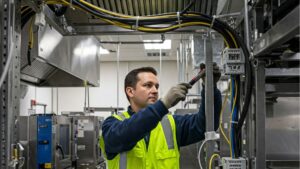
Choosing Professional Circuit System Services
Selecting qualified professionals for circuit system projects requires careful consideration. Verify that electricians hold current licenses and carry adequate insurance coverage. Experience with similar projects is another important factor, as wiring in requirements vary significantly between residential, commercial, and industrial applications.
Reputation and references provide valuable insight into an electrician’s circuit system quality and reliability. Established providers like Lightspeed Electricals typically offer more consistent results than unproven contractors. Clear communication about project requirements, timelines, and costs helps ensure successful wiring in outcomes.
Warranties and post-installation support are additional considerations when selecting wiring in services. Professional electricians stand behind their work and are available to address any issues that may arise after project completion. This commitment to quality distinguishes expert circuit system services from substandard work.
Conclusion: The Importance of Proper Circuit System
Professional circuit system practices form the backbone of safe, reliable electrical systems in all types of buildings. From basic residential circuits to complex industrial installations, proper wiring in ensures optimal performance and minimizes safety risks. The expertise required for quality wiring in encompasses technical knowledge, practical skills, and strict adherence to electrical codes.
As electrical technologies continue advancing, the principles of proper circuit system remain essential for adapting to new requirements. Whether planning a new construction project or upgrading existing wiring, investing in professional wiring in services provides long-term value through improved safety, efficiency, and system reliability. For comprehensive electrical solutions, trust experienced professionals to handle all your circuit system needs with the highest standards of quality and workmanship.

